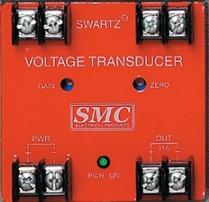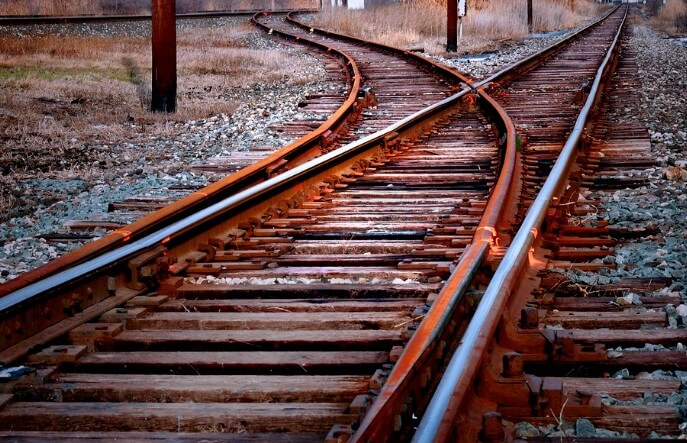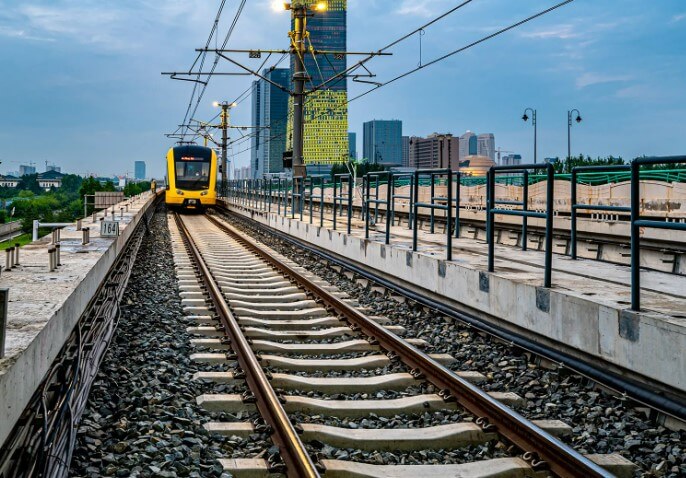
Railway systems have traditionally acted as a linchpin of progress by linking towns, people, and industry. In the current era of rapid technological growth, the railway industry is undergoing unprecedented change – towards smarter, faster, greener and people-friendlier operations. A key aspect in such change involves combining advanced electrical and electronic technologies into products and systems, allowing trains as well as infrastructure to operate more safely, smoothly, and efficiently. The high-voltage transducer, one of the most important devices in this transition, subtly but significantly enriches modern railway applications with state-of-the-art technology. In this article, we will describe how high-voltage transducers work, why they are so crucial, and their real-world applications in today's railway technology.
What is a High-voltage Transducer?
At the guts, it's a device that converts electrical signals--typically high voltage ones --into manageable lower-level signals where they can be measured and analyzed with safety. In application to the railway, the voltage levels are often very high indeed. Railway lines, for example, electric systems at this height, require such auxiliary service provision as transmissions to help move long electric trains over long distances. This situation demands that we measure these voltages, and that no practical method of measurement is without risk. So this is where a high-voltage transducer comes in--it solves the problem.
By accurately scaling down voltage to an acceptable magnitude for the equipment, control systems, monitoring current protection systems, and all other auxiliary systems can collect precise data without facing the dangers inherent in high voltage power sources. In this way, it plays an essential role in ensuring safety as well as satisfying performance requirements for rail infrastructure both now and into the future.

GET IN TOUCH
The ultimate solution for reliable power control! call us at 276-285-3841
Why Railways Need High-voltage Transducers
Today’s railways are wired with powered electricity supplying energy for high-speed trains, ordering signal systems, and managing stations’ business operations. And in this environment, the reasons why high-voltage transducers are necessary are these:
- Safety – Direct contact with high-voltage lines can be fatal. High-voltage transducers eliminate the need for direct measurement, protecting technicians and operators.
- Accuracy – Transducers provide accurate voltage readings, ensuring that trains receive the right amount of power and that systems function optimally.
- Efficiency – Monitoring and controlling power consumption helps railways cut costs and reduce waste.
- Reliability – With real-time data provided by transducers, railway operators can predict failures and avoid costly breakdowns.
Applications of High-voltage Transducers in Modern Railway
1. Traction Power Monitoring
The ultimate function of the high-voltage transducer in railways is to monitor traction power. Trains are electric. They run on top of overhead lines or third rails and how to do that is very simple -- simply by trenching cables in these areas so that higher voltages can be absorbed without large losses due to resistive heating in conductors. Transducers read this supply voltage for trains and make sure they have a stable power supply.
In high-speed rail networks, even slight variations in the power supply can cause a train to go off the tracks or suffer some other mechanical problem. By means of current as well as real-time voltage data, transducers enable operators to adjust and stabilize power supplies for both operating efficiency and human comfort.
2. Substation Control and Automation
Railway substations play a critical role in converting and distributing electricity to tracks. These substations typically handle thousands of volts. For their safety and effective operation, meticulous monitoring is essential.
High-voltage transducers are used in substations to:
- Measure incoming and outgoing voltages
- Detect abnormal conditions such as overvoltage or under-voltage
- Feed data into Supervisory Control and Data Acquisition (SCADA) systems
By integrating transducers into substation automation, rail operators can remotely monitor, control, and optimize power distribution, giving better train performance and fewer service interruptions.
Overhead Line Monitoring
Electrified railway systems consist of overhead lines (catenary systems) carrying high-voltage electricity. These lines are exposed to weather, temperature changes, and mechanical wear, all of which can degrade their performance.
High-voltage transducers are installed to keep track of the voltage along these lines constantly. With such data, operators can tell when there is a drop-off in power or line degradation of any other sort. Also, they can detect faults before they develop into stoppages and improve the quality of maintenance, and reduce costly downtime in this manner.
Protection Systems
In railway networks, protective relays and circuit breakers must have data that is accurate and reliable in order to react quickly when faults such as short circuits or voltage spikes occur. This measurement is achieved by the precise delivery of an actual instantaneous voltage from their high-voltage transducers.
The transducers ’data is used to trip protective devices, for instance, in the event of a sudden spike, ensuring the section is disconnected from the fault point and so saves trains--and also infrastructure--from being damaged. Without these devices, whole railway networks could experience catastrophic failures.
Energy Efficiency and Sustainability
Railways around the world are under increasing pressure to reduce carbon emissions and operate sustainably. One way to achieve this goal is through energy management.
High-voltage transducers help operators:
- Track real-time energy consumption
- Identify inefficiencies in the system
- Enable regenerative braking systems to feed energy back into the grid
Power systems that feed energy from the grid into regenerative braking units. On the other hand, if a train is decelerating, its brake system will be responsible for generating electricity. With transducers positioned as part of the equipment on hand, this power can be measured and consequently applied to previous trainloads, providing an immediate benefit in return for saving power.
Onboard Train Systems
While most applications are in infrastructure, high-voltage transducers are also used in on-board train equipment. Many modern trains have their own electrical systems, which handle everything from lighting and HVAC to safety gear. Transducers see to it that these on-board systems operate within safe voltage levels, which protects both passengers and equipment.

GET IN TOUCH
The ultimate solution for reliable power control! call us at 276-285-3841
Integration with Smart Rail Technologies
The future of rail will be digital and smart technology. High-voltage transducers serve as the bridge between powerful electrical systems and data-driven monitoring platforms.
Through connecting IoT (Internet of Things), transducers send voltage data in real-time into cloud-based platforms where AI algorithms can predict failures, optimize schedules, and improve energy management. So not only are railways made more reliable, but they’re also part of the worldwide move toward smart transportation.
Benefits of Using High-voltage Transducers in Railways
To summarize, the adoption of high-voltage transducers brings the following benefits to modern railway systems:
- Enhanced Safety for workers and passengers
- Improved Operational Reliability by reducing faults and downtime
- Energy Savings through better monitoring and control
- Sustainability by supporting regenerative energy systems
- Future-readiness by enabling digitalization and integration with smart systems
Conclusion
Modern rail systems are no longer just metal rails and locomotives, but electricity ecosystems covered in delicate electronic control architecture. At the heart of this structure, monitoring, safety, and efficiency are contained in one part, but with an importance far beyond that for railways today. High voltage transducers are a small thing, integrating into a vast system. Although rail networks advance and become digitalized, high-voltage transducers will continue to lead the way in safer, more comfortable, and smarter transportation for millions of passengers worldwide.
Swartz Engineering is the railway industry's leading company, producing movement and power systems for large rail vehicles. Extra weight considerations place all sorts of constraints on operations. The technology is now being integrated at sites around the world, including Europe, China, and the USA, in order to ensure that high-speed railways can continue being both reliable and sustainable modes of transport as ever before. most reliable and sustainable modes of transport in the modern world.
Products We Offer
Swartz Engineering strives to provide top-quality products to achieve our customer's needs. Our products include:
- Type 76 DC Relay
- Type 82 DC Relay
- Swartz Engineering’s Type 64 Ground Relay
- Type 32 Reverse Current Relay
- Type 150 DC
- CSM Shield Monitor
- Metal Oxide Surge Arrestors
- Transducers
- MVIS SL Slim-line Contactor
- Fully-tested Power Control Rooms
- Swartz Engineering’s Portable Substations
For nearly half a century, we have proudly led the industry in ensuring safety and efficiency. Swartz Engineering is a trusted family-owned company dedicated to providing top-notch power distribution solutions for the electrical industry. Contact us today.
